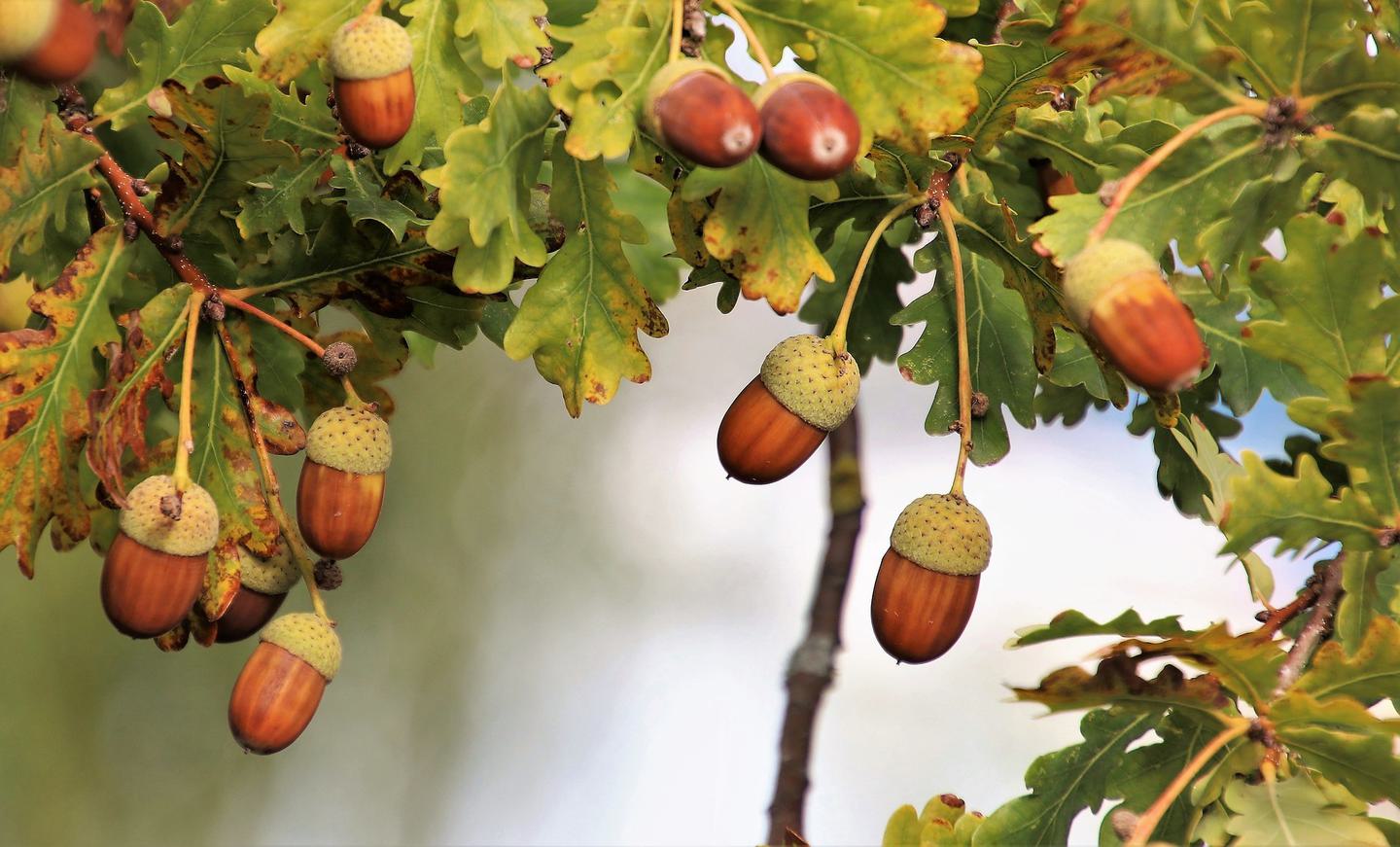Guides
Propagation
There are three chief ways that trees are propagated. Chew Valley Trees does a bit of propagation, but we don't have the capacity of wholesale nurseries who specialise in propagation, producing literally tens of millions of young trees each year. If you're interested to know more, here's how our trees start their life.

Seed
Some trees are produced from good old fashioned seed. We sow some of our own seeds, collected at the nursery, but by and large the seed-grown trees we sell have been started off by other specialist British wholesale nurseries who have the capability to produce millions of specimens. (Read more about our suppliers.)
After a year or two, some of these baby trees may be large enough to sell as hedging whips, or as saplings intended to grow into full size trees, eventually. Some will need growing on for a few more years before they are large enough to be sold for these purposes.
Usually, only species can be grown from seed, e.g. Quercus robur (English oak), Sorbus aucuparia (rowan), Fagus sylvatica (beech). (The long Latin name is the formal name of the tree and the short English name is the common name, which can be ambiguous, hence we often use the Latin name.)
Trees produced from seed exhibit a fair amount of natural variation, due to the mixture of genes they inherit from their parents. Sometimes, unusual characteristics arise, like the purple colour of purple beech, and this can be passed on in seed. So you can take the seed of purple beech and most of the time, the baby trees will also have purple leaves (but not always!) A bit like two blue-eyed parents may well have blue-eyed children, especially if the grandparents also had blue eyes. But if there are brown eyes in the gene pool, brown-eyed children aren't out of the question!
If you want to be absolutely sure to keep a special characteristic in your new trees, you need to use 'vegetative propagation' (cuttings or grafting). Say, for example, you have a tree that usually has small single flowers, but you grow one from seed and find it has amazing pink double flowers, and you want lots more of this tree and that delightful blossom, you may be disappointed when you plant its seed (if it produces any) only to find the baby trees have gone back to having small flowers. This is called not coming true from seed.
Cuttings
Some trees can be effectively cloned by taking a cutting and then placing this into growing media (e.g. compost or soil), where the cutting takes root and produces a separate tree. It's a clone because it has exactly the same genes as the tree that provided the cutting.
This method is used for plants that easily produce roots in this way, such as willows, poplars and cherry laurel. It's useful for producing lots of trees with the same characteristics. Salix vitellina 'Pendula' and Populus 'Aurora' are produced in this way.
Grafts & Budding
Most trees you see that have a name attached, such as Malus 'Red Falstaff' (Red Falstaff apple) or Crataegus 'Crimson Cloud' (crimson hawthorn), have been produced through some type of grafting or budding. As with cuttings, the new tree is a clone of the tree it was taken from, but instead of growing on its own roots, a cutting or bud is 'stuck' onto an existing rootstock through the skilled process of grafting.
This method is used where the tree either doesn't easily take root from cuttings or where it will grow better on roots from a different tree. It might also be used to produce a flowering/fruiting tree more quickly than waiting for one to grow from seed - some trees take decades before they produce flowers. In the case of fruit, the rootstock also controls the ultimate height of the tree, which is useful.
You can't just graft anything onto anything, and you can't just use glue! The rules of genetics mean that an apple scion (that's the upper part of the tree) wouldn't take kindly to being joined onto an oak rootstock, for example. The rootstock doesn't have to be exactly the same species for success, but it generally needs to be at least a 'cousin' of the scion to be compatible. That is, apples, hawthorn and roses are all in the rose family, so they're suitable candidates for splicing (to put it simply). Years of experimentation and knowledge gathering in this field have allowed horticulturalists to find out what works and what doesn't.
Grafting and budding aren't a piece of cake. After obtaining and planting your rootstock, you need to accurately cut and attach the scion/bud to match what are known as the cambium layers, then tie to hold them together. The join needs to be kept free of contamination and protected from damage, and the tie must be left in place until both parts have integrated. If not done properly, the top growth will die as it is starved of water and nutrients.

Fruit & Rootstocks
Grown on their own roots, many fruit trees would get too tall, too quickly, making it hard to reach the fruit. Particular rootstocks are therefore used to control the ultimate height of the tree. There are a variety of sizes on the market (e.g. dwarfing), but at Chew Valley Trees we stick with semi-vigorous rootstock trees, which grow to about 5m/15ft. We find this is a good all-rounder, growing not too slow and not too fast, suitable for training or growing as a standard tree.